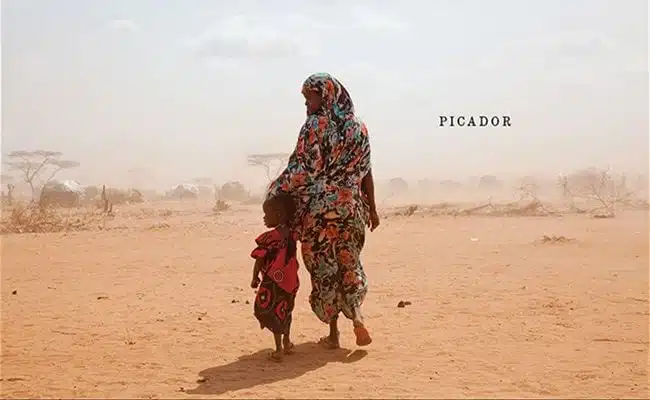
Joseph Stalin reportedly said that the death of one person was a tragedy, but the death of one million a statistic. Any journalist knows that it’s easier to get readers to care about the misfortune of one person than to the same thing happening to many people, and with the increasing need to garner lots of clicks and page views, the news media has shown itself to be willing and able to exploit this human tendency. For instance, much of the coverage of refugee issues (primarily involving those trying to enter Europe) has focused on individual stories — a drowned child, a family living in a muddy tent — which, although they are great for capturing attention and sympathy, don’t provide much in the way of useful information to readers.
A statistical approach can help set individual stories in context. For example, according to the United Nations High Commission on Refugees, at the end of 2014 there were almost 20 million refugees in the world, with the preponderance (over 86 percent) hosted in developing countries (i.e., not Western European countries like France or Greece). The problem with this approach is that many people’s eyes glaze over at the first mention of numbers, and it’s not easy to relate to such bare facts, even with clever analogies to provide context (e.g., if all the world’s refugees lived in one place, it would be more populous than New York State).
In City of Thorns, Ben Rawlence has found a third way to communicate this tragedy. A researcher for Human Rights Watch, Rawlence did extensive fieldwork in Dadaab, a refugee camp in Kenya, over a period of several years. He tells what he learned through in-depth narratives of nine people living in Dadaab, using their individual stories to illuminate larger issues including daily life in the camp and the political and social circumstances that brought these individuals there in the first place. The result is a stunning and welcome antidote to simplistic treatments of refugee crises and the equally simplistic solutions sometimes offered for them.
Dadaab, located on a dusty plain about 70 miles from the border of Somalia, was created in 1992 as a temporary refuge for people fleeing the Somali Civil War. Originally built to house 90,000 people on a temporary basis, it has instead become an impoverished city of 500,000, whose residents come from Ethiopia, Uganda, Rwanda, and Sudan as well as Somalia. Despite its official designation, Dadaab long ago ceased to be a temporary refuge: some of its current residents were born there and have never lived anywhere else, and many others have no real prospects of ever leaving.
In Dadaab, refugees receive carefully measured amounts of flour, rice, beans, salt, and oil, while the other things they may need (such as additional food, clothing, kerosene, or a mobile phone) are for sale in an extensive grey market. But how to get the money to buy those things? Residents are not allowed to leave the camp to work, and those who are able to find a job within the camp receive pitifully small wages, because the well-paying jobs are reserved for Kenyans. Many refugees don’t even have the option of working, of course, and must trade some of their food rations for whatever they want or need. As Rawlence puts it, “the price of anything in the camps is hunger” (41).
The people profiled by Rawlence are survivors, and it’s impossible not to wish the best for them. Take Guled, born into relative privilege (his father was a military official in the regime of Mohamed Siad Barre) in Mogadishu just as the United States was withdrawing from Somalia and leaving the country to its own devices. Guled managed to grow up and survive in the war-torn capital city until one day he and a number of other boys were kidnapped out of their school and forced to become soldiers for the militant group al-Shabaab. He escaped and survived the perilous trip to Dadaab.(Kenyan bandits call the Somali refugees “ATM machines” because they are often carrying money which can be taken by force, and rape and beatings are also common). In the camp, the first thing Guled did after receiving his food rations was to sell some of them so he could buy a mobile phone and call his wife and mother.
Or consider Muna, who arrived at Dadaab as a infant (her presence spared her mother from being raped by the soldiers of the United Somali Congress) in 1991. A member of the first generation raised entirely in the camp, educated by Kenyan teachers and exposed to the liberal ideals of the NGO workers in the camps, Muna found a job working for the German development agency GiZ. She would not earn much money (because refugees are not officially allowed to work, they are classified as volunteers and paid only a tiny stipend), but would be allowed to sleep in the NGO’s fortified compound, safe from the husband who was stalking her.
The collective portrait of Dadaab in City of Thorns is that of a large majority of people striving against very difficult odds to make their lives better, and a small minority who prey on the misfortune of others. If no one’s hands are entirely clean — even NGO workers must sometimes make compromises in order to get their work done — the overwhelming impression in this book is of people who are behaving remarkably well in circumstances not of their making. Rawlence doesn’t offer solutions, and doesn’t even provide a conclusion — instead, the story ends when it ends, with the half a million residents of Dadaab continuing to get up every day and doing what they can to survive and perhaps even thrive.

